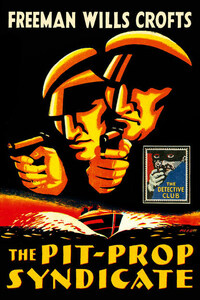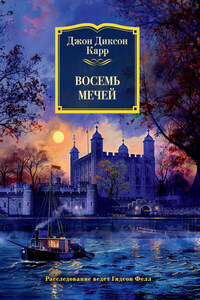An imprint of HarperCollinsPublishers Ltd
1 London Bridge Street
London SE1 9GF
www.harpercollins.co.uk
First published in Great Britain by W. Collins Sons & Co. Ltd 1921
Published by The Detective Story Club Ltd 1932
Copyright © Estate of Freeman Wills Crofts 1921
Introduction © Dolores Gordon-Smith 2016
Cover design © HarperCollinsPublishers Ltd 1932, 2016
A catalogue copy of this book is available from the British Library.
This novel is entirely a work of fiction. The names, characters and incidents portrayed in it are the work of the author’s imagination. Any resemblance to actual persons, living or dead, events or localities is entirely coincidental.
All rights reserved under International and Pan-American Copyright Conventions. By payment of the required fees, you have been granted the non-exclusive, non-transferable right to access and read the text of this e-book on screen. No part of this text may be reproduced, transmitted, down-loaded, decompiled, reverse engineered, or stored in or introduced into any information storage and retrieval system, in any form or by any means, whether electronic or mechanical, now known or hereinafter invented, without the express written permission of HarperCollins.
Source ISBN: 9780008159290
Ebook Edition © January 2016 ISBN: 9780008159306
Version: 2015-10-29
THE PONSON CASE, first published in 1921, is Freeman Wills Crofts’ second book. Crofts had blazed onto the scene the previous year with his debut novel, The Cask. Far outselling Agatha Christie’s first novel, The Mysterious Affair at Styles, published in the same year, Crofts went on to become a cornerstone of what we now regard as the Golden Age of detective fiction, the period between the two world wars.
Together with his great contemporaries, Agatha Christie and Dorothy L. Sayers, Crofts could not only tell an engaging and entertaining story, but paid the reader the compliment of assuming they were intelligent enough to engage with the logical working out of the mystery.
Crofts respected his readers; he always plays fair (an important quality in Golden Age crime) so that the reader has the same information as the detective. We, the reader, along with the detective, are invited to find a solution to the mystery. An important point, which demonstrates the quality of Crofts’ writing, is that the solution is always credible. Not for Crofts, the ‘infernal ingenuity’ that P. G. Wodehouse, a devoted mystery reader, complains of in his excellent essay, ‘Thrillers’. Instead the criminal, although ingenious, always acts in a way which makes perfect sense
His meticulous approach to plotting is recalled in a letter written by F. T. Smith, Crofts’ editor at Collins in the 1920s, to the Chairman of the company, Billy Collins. Although the letter was written in 1973, Crofts evidently made a lasting impression on Fred. The book in question isn’t named, but it’s a fair assumption that he is discussing The Ponson Case:
‘In Crofts’ case he loved criticism. He always wanted to come in and devote about three hours to a detailed discussion. How could he possibly require this? Well, I remember one case in which the body of the victim was discovered washed ashore on the banks of a river. I innocently had queried the time of the discovery and made a pencilled note on the margin. Crofts arrived with a suitcase for a discussion. He produced three large Ordnance Survey maps showing the course of the river, a very full county history, two reports on flooding in the county, one report on the effect of the current on the river banks and lastly a batch of correspondence with a medical officer of health showing how to tell how long a body had been in the water. Now all this trouble to prove that the body thrown into this particular river at a certain point would be washed ashore at another place at a more or less definite time.’
Freeman Wills Crofts was an Irishman, born in Dublin in 1879. He was named after his father, a British army doctor, who died in Honduras before his son was born. His mother married again when Crofts was three and the family moved to the small village of Gilford, Ulster, where his stepfather, Reverend Harding, was the vicar. Gilford village had been founded in 1641 by a Captain John Magill. Crofts was later to borrow Captain Magill’s name for one of his best books, Sir John Magill’s Last Journey, which draws heavily on his Ulster background.









